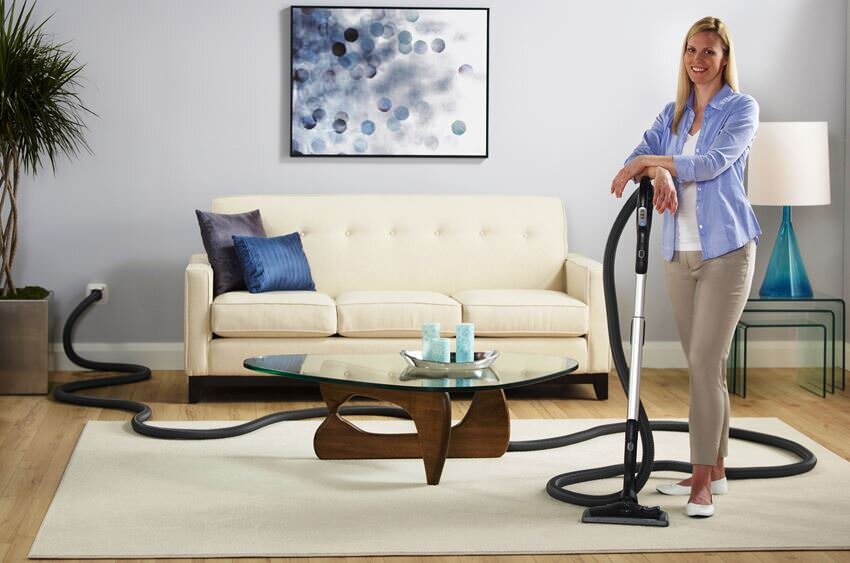Central vacuum systems use specifically designed tubing installed in the walls of your home to carry 100% of the contacted dirt, dust and allergens away from your living area to the central power unit commonly located in the garage, utility room or basement.
To activate the system, simply insert the lightweight hose into a central vacuum wall inlet valve. Most homes will typically have one central vacuum inlet valve per floor averaging three per house. The flexible lightweight hose and inlet system allow you to easily move from room to room without having to push a heavy upright vacuum or pull canister vacuum behind commonly bumping into walls or valuable furniture.
Consistent power and suction is always available so you’ll never have to worry about the common pitfalls of stick vacuums such as charging times or battery depletion.
Central vacumm systems are typically quieter than most portable stick vacuums as the power unit of a central vacuum is located outside of the living, where the motor of a portable vacuum is in the same room you clean.
1. Internal wall piping | 2. Wall inlet | 3. Power unit | 4. VacPan (optional) | 5. Filtered Separator | 6. External Exhaust

The installation process
Build site meeting (if roof is on for new builds)
Plans (emailed)
Receive a Quote with options within 24 hours
Vacuum location plans showing possible plug in points and machine locations
Site meeting with owners to confirm machine and plug in point locations in the home
Confirm date of pipe work installation
Install vacuum pipe work
Once the home is painted, install the vacuum machine and plug in points
Demonstration of how the system works and its maintenance.
Contact the team today if you’d like to know more about installing a central vacuum system in your new or existing home.

